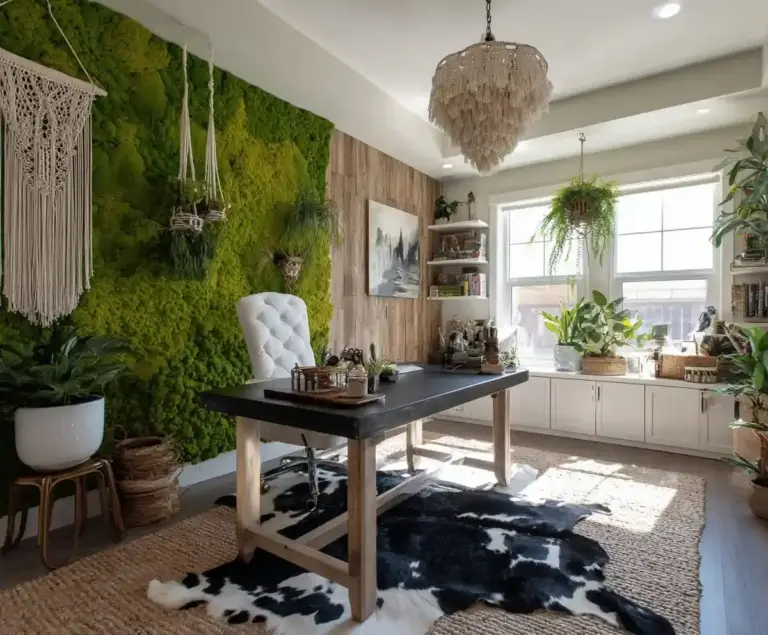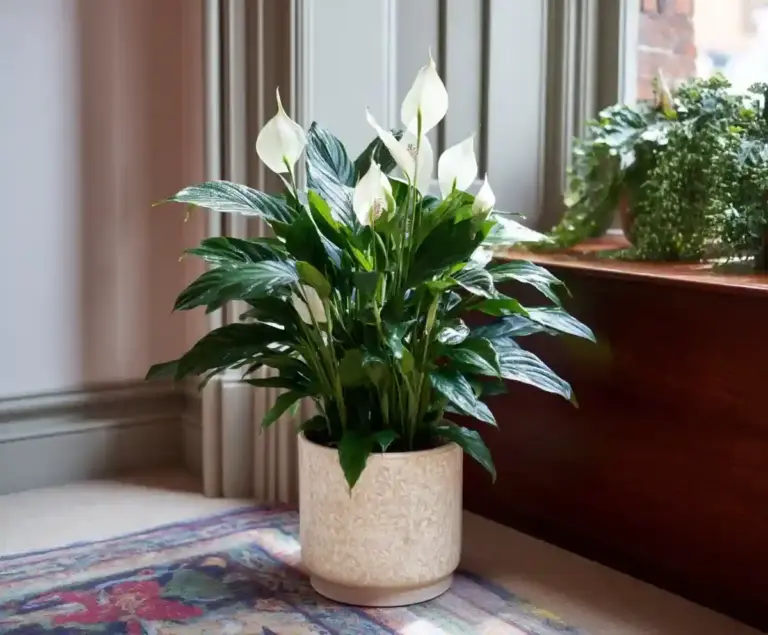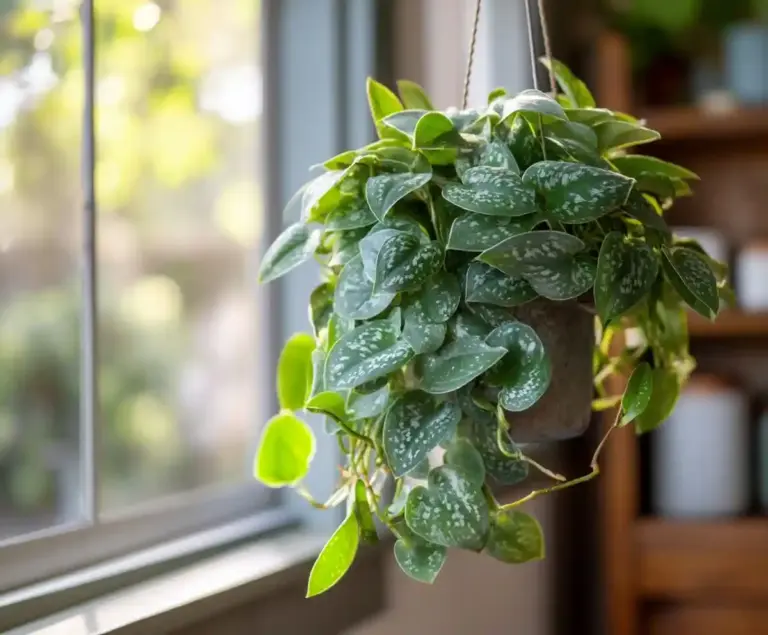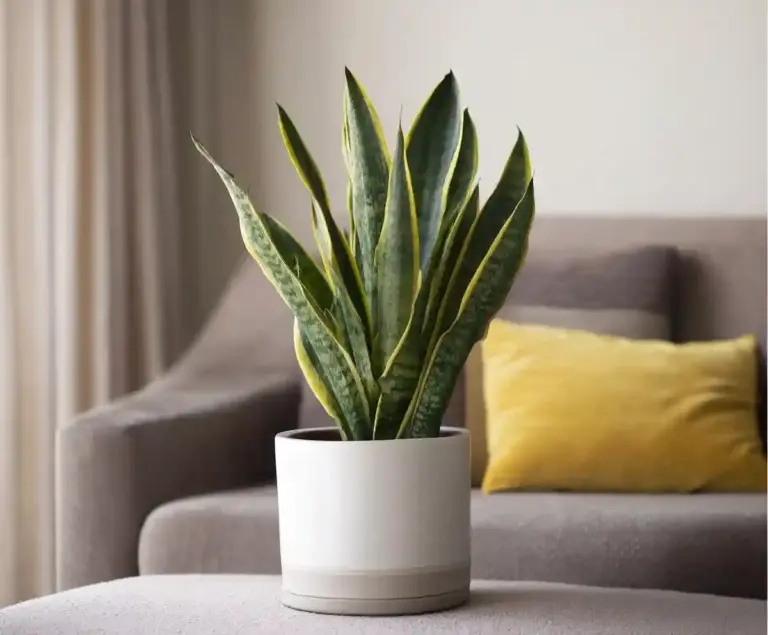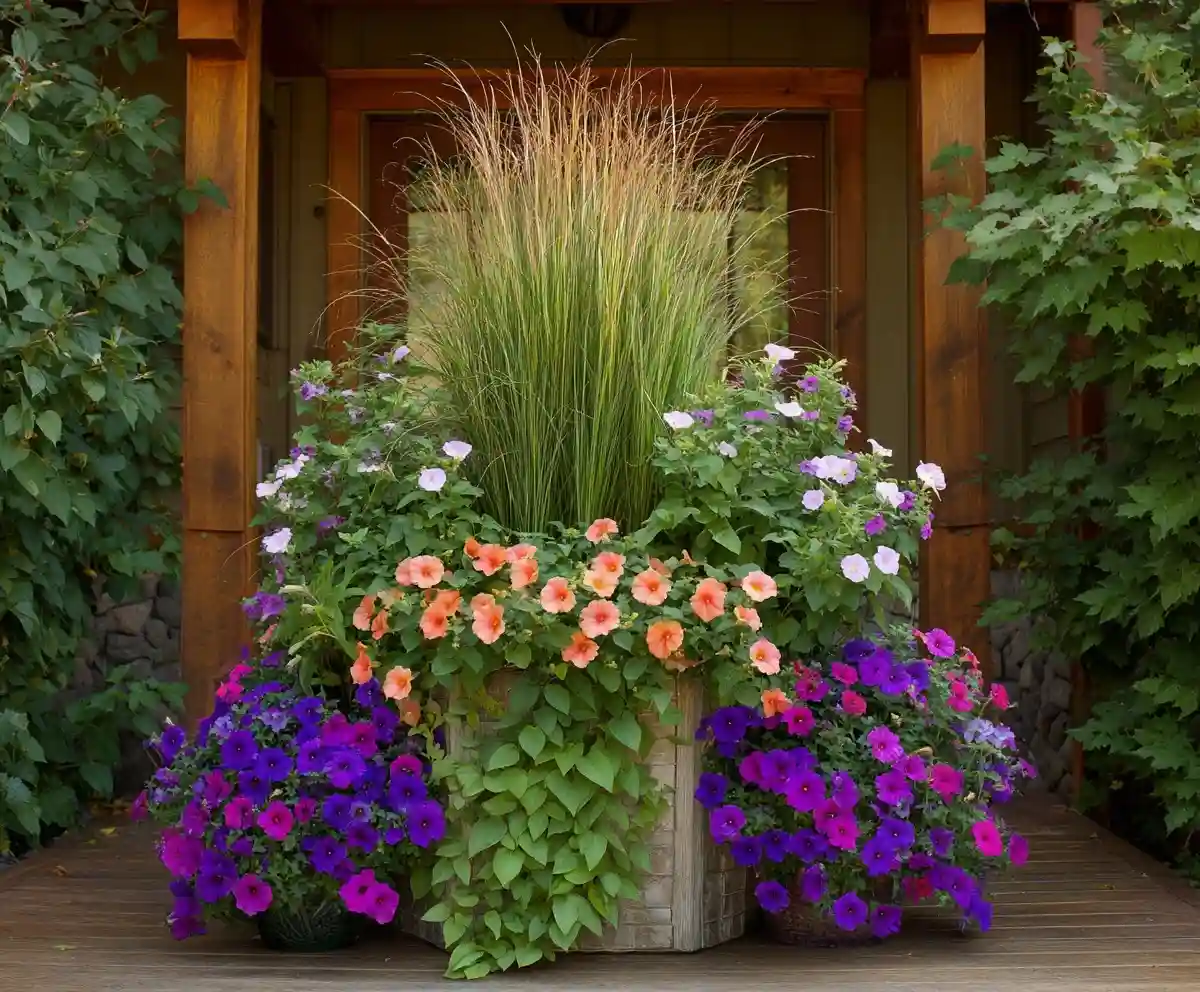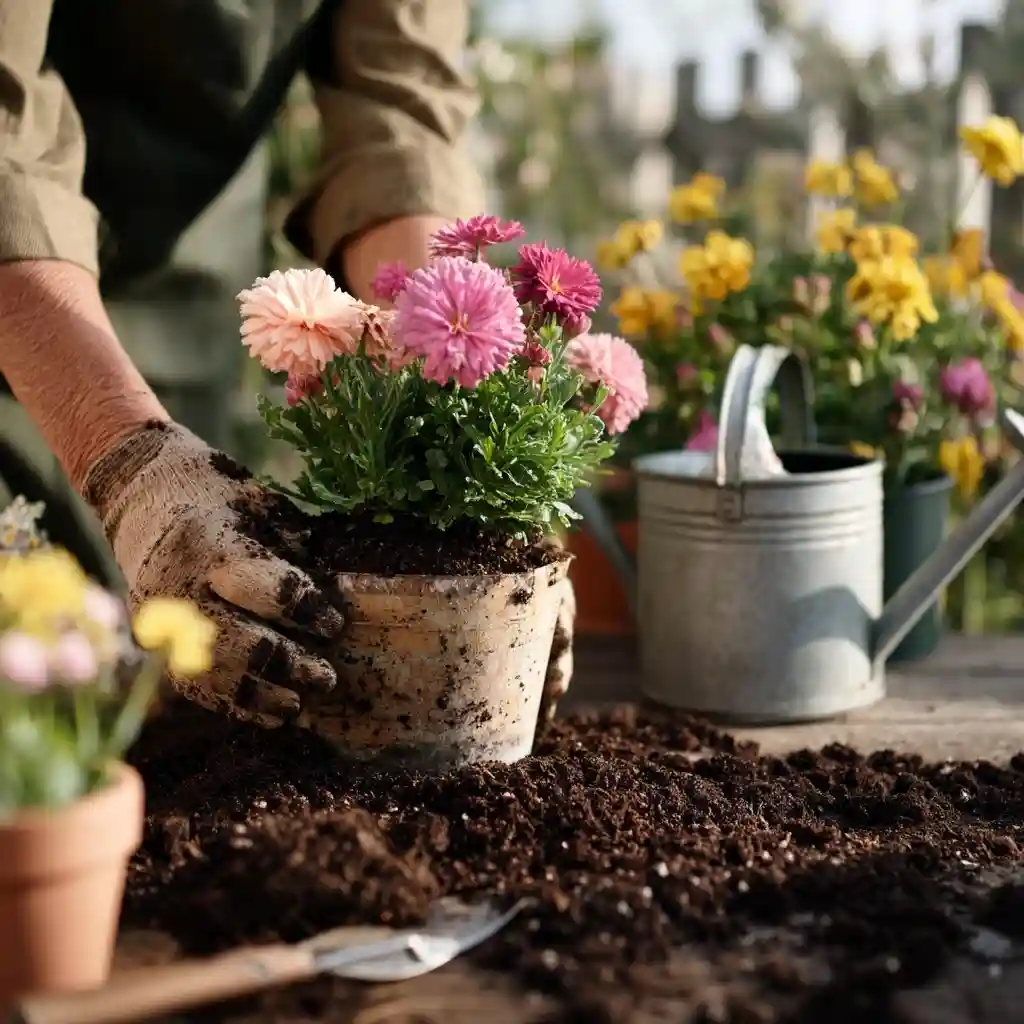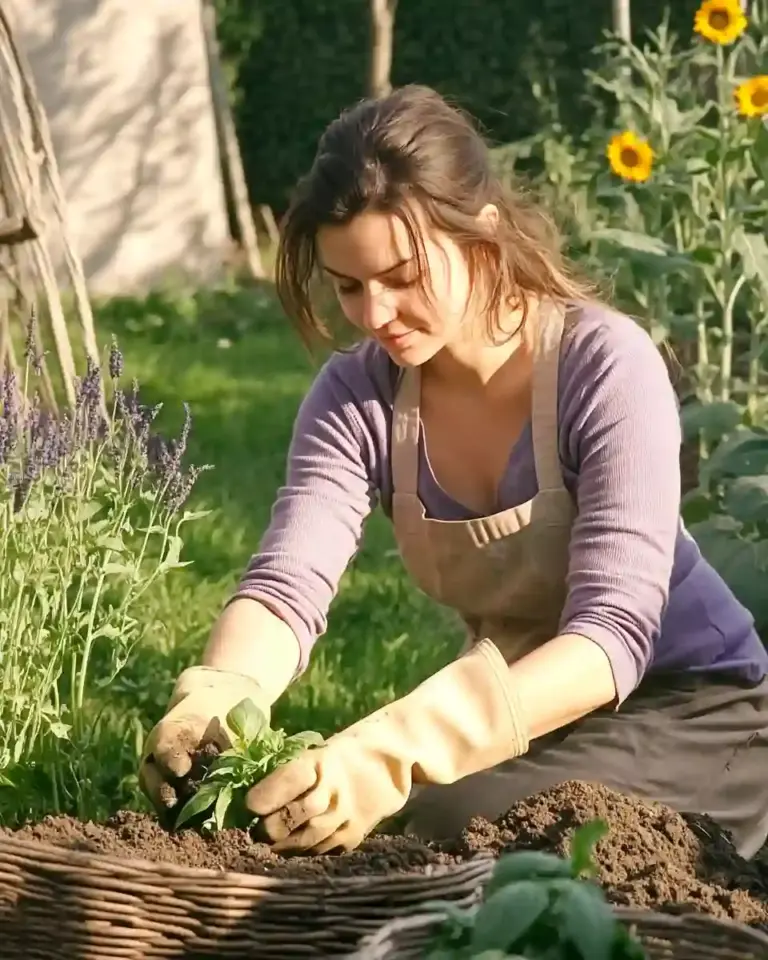Planter ideas can turn even the smallest patio or balcony into a lush, eye-catching retreat. Whether you’re working with a single pot or planning an entire container garden, the right combination of plants, colors, and containers can make all the difference. From dramatic thriller plants to humble herbs, your options are endless—and surprisingly easy to pull off with the right approach.
In this guide, we’ll walk through expert-level tips to elevate your garden containers—from choosing soil and drainage to creative ways of combining plants and upcycling unexpected items. These creative planter ideas for small gardens are designed to help you make the most of any outdoor space—no matter your budget, experience, or square footage.
Before You Start: Tips for Planting a Container
Getting started with your planter ideas begins long before you place a single flower. A beautiful, healthy container garden starts with the right foundation. That means choosing the best soil, ensuring proper drainage, and knowing how to water and fertilize effectively. These basics make all the difference in how your plants grow, bloom, and thrive.
Use High-Quality Potting Mix
Always choose a well-draining, high-quality potting mix—not garden soil. Look for one with added compost or perlite for moisture retention and aeration. Avoid using heavy soil that can compact and suffocate roots.
Don’t Skip the Drainage
Every container should have at least one drainage hole. Without it, water can pool at the bottom, leading to root rot. If your favorite pot doesn’t have one, drill a hole or use it as a decorative cachepot over a functional nursery pot.
Water Consistently—but Smartly
Container gardens dry out faster than in-ground beds, especially in summer. Water deeply until it runs out the bottom, then wait until the top inch of soil is dry before watering again. Early morning or late evening is ideal to reduce evaporation.
Fertilize Regularly
Nutrients wash out of containers quickly. Use a slow-release fertilizer at planting time, then supplement with a liquid feed every two to four weeks, depending on the plant type.
Pro Planting Tips
- Fill all air gaps with soil to support root growth.
- Pack in plants snugly for fullness, but give them room to grow.
- Trim leggy plants and deadhead blooms to encourage reblooming.
- Use watering wands to reach hanging baskets or tight corners.
Laying the groundwork with these simple steps will set your planter ideas up for success all season long.
Selecting Thrillers, Fillers, and Spillers
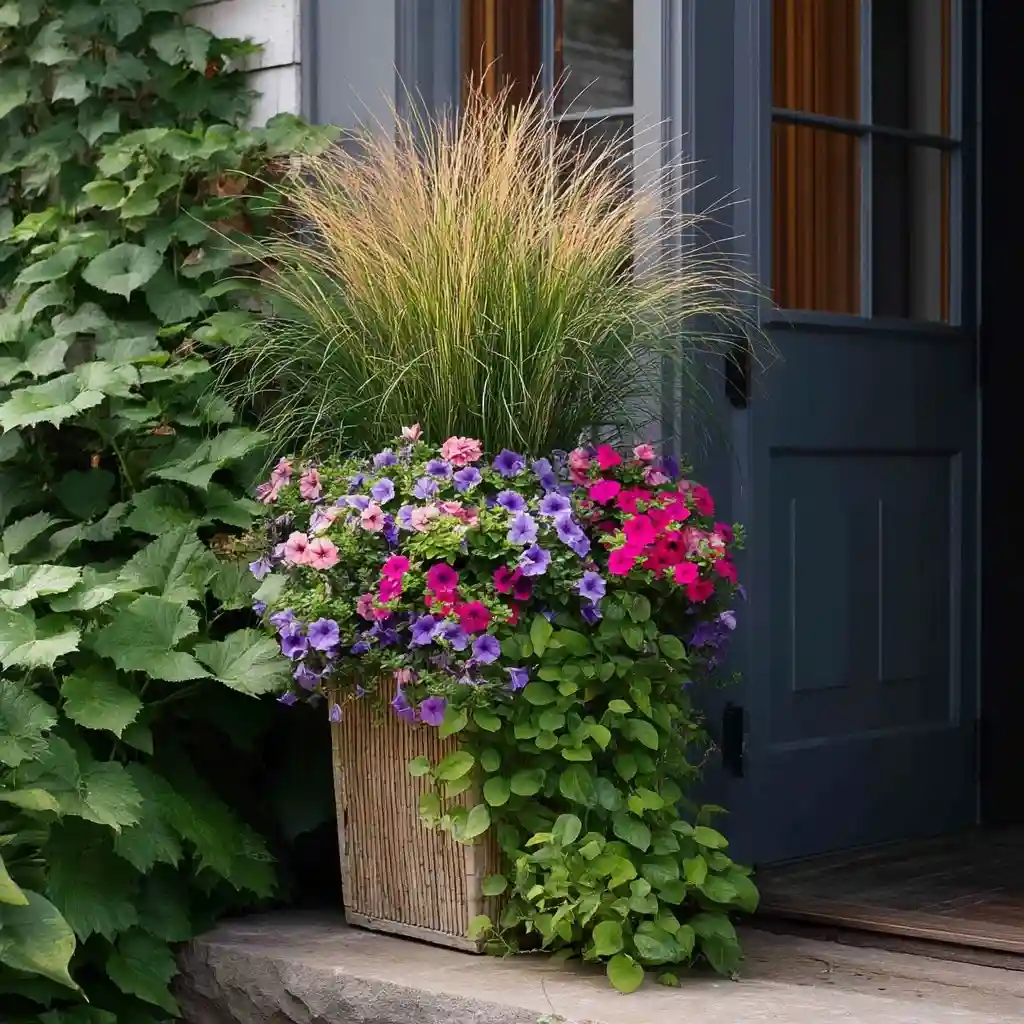
One of the most reliable planter ideas for creating visually balanced containers is the classic “thriller, filler, spiller” formula. This tried-and-true technique helps both beginners and seasoned gardeners design arrangements that feel full, dynamic, and intentional.
What Is a Thriller?
A thriller is your bold centerpiece—the focal point of the container. It adds height and drama. Think ornamental grasses, canna lilies, or even lemongrass, which pulls double duty as an edible and an eye-catcher.
What Are Fillers?
Fillers are the mid-level plants that surround the thriller. They add bulk and texture while tying the whole look together. Popular choices include calibrachoas, petunias, coleus, and lantana. Many of these flower generously and stay lush through the season.
What Are Spillers?
Spillers trail gracefully over the container’s edge, softening the lines and drawing the eye downward. Classic spillers include sweet potato vine, creeping Jenny, alyssum, and creeping rosemary—some of which are edible, too.
Quick Design Tips
- Match sun/shade preferences for all three plant types.
- Choose fillers that contrast the thriller in color or leaf shape.
- Repeat elements across multiple containers for a cohesive look.
With just three plant types, you can create stunning planter ideas that look complex but are incredibly easy to pull off.
Choosing a Color Palette for Planters
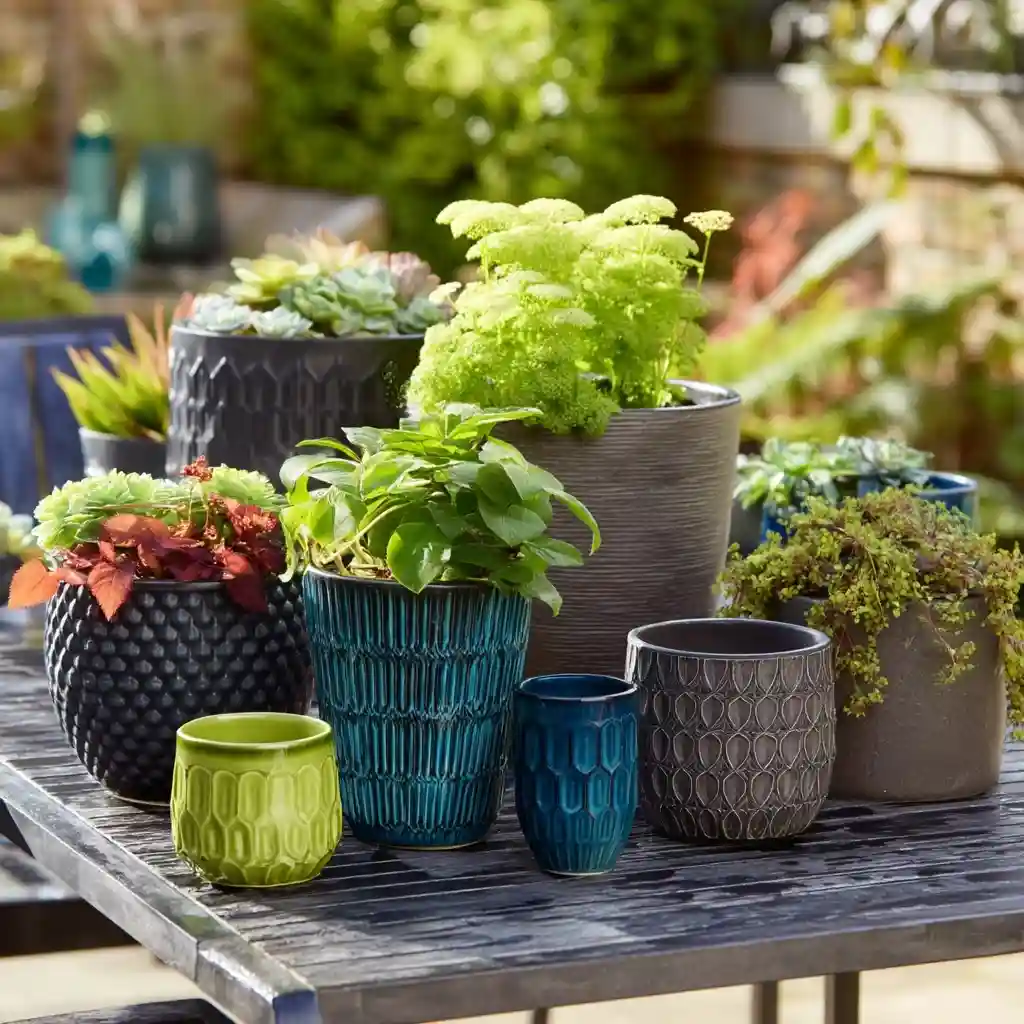
Color is one of the most powerful design tools behind great planter ideas. Whether you lean toward soft pastels or bold brights, choosing a thoughtful palette helps unify your containers and elevate their overall impact.
Go Monochrome for Elegance
A monochromatic planter uses variations of a single color—like different shades of purple or white. This style feels calm, modern, and polished. Try combining lavender, petunias, and ‘Ping Pong’ gomphrena for a lavender-toned pot, or stick with white impatiens, dusty miller, and lamium for a cool, crisp vibe.
Mix It Up with Complementary Colors
If you prefer a more energetic look, pair complementary colors like orange and blue, or pink and lime green. Just make sure to limit your palette to two or three dominant colors to avoid visual clutter.
Let a Star Plant Lead
Sometimes, one standout plant can dictate your whole color scheme. If you fall in love with a bright red dahlia or a chartreuse coleus, use that as your anchor and build around it with supporting tones.
Repeat Colors for Cohesion
If you’re working with multiple pots in one space, repeating a specific color—like burgundy foliage or yellow blooms—can tie everything together, even if the containers differ in size and style.
Choosing the right color combinations turns your planter ideas into cohesive, eye-catching displays that feel intentional and artfully arranged.
Vertical & Hanging Planter Ideas
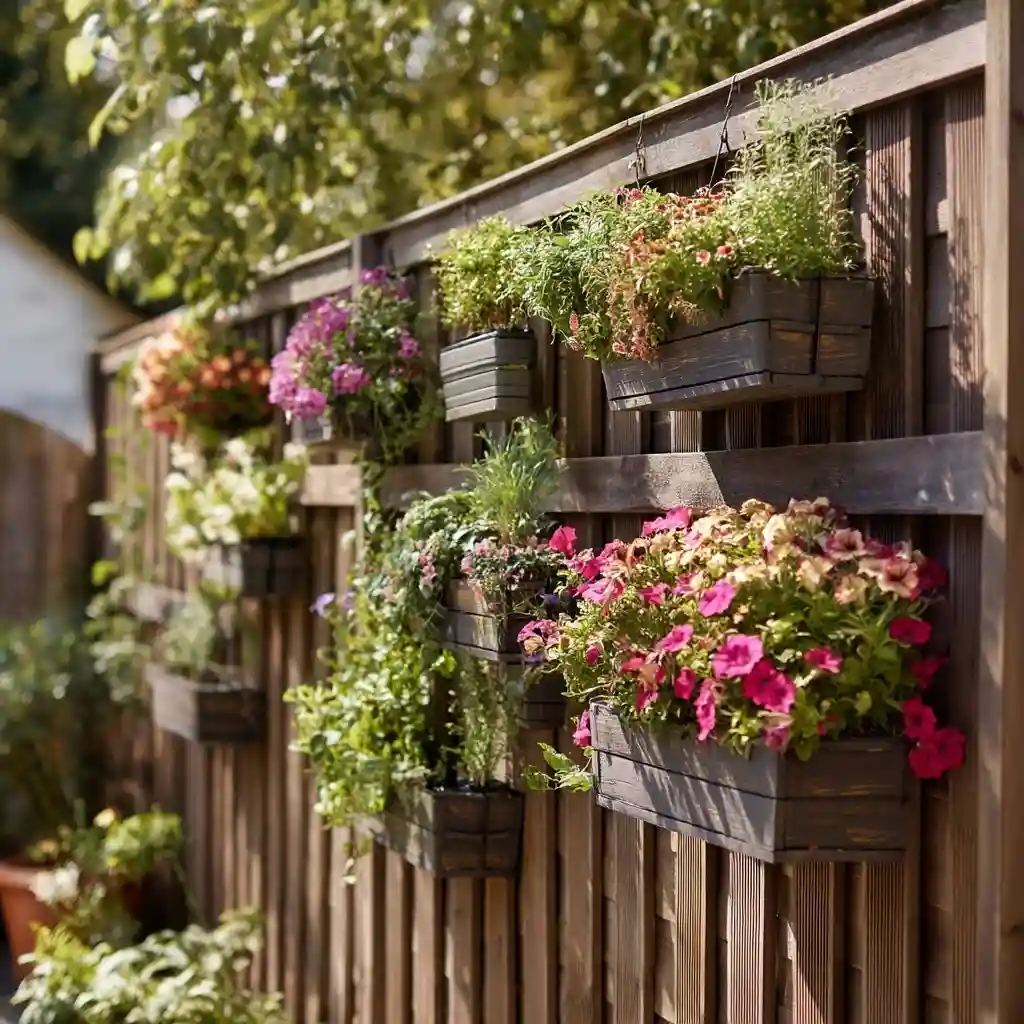
Running out of ground space doesn’t mean your planter ideas have to suffer. Vertical gardening and hanging containers are excellent solutions for balconies, small patios, and fences that could use a little life.
Hanging Baskets That Overflow with Color
Use hanging baskets to add vibrant layers at eye level or above. Trailing plants like petunias, calibrachoas, and ivy geraniums are perfect for this. For low-maintenance options, consider self-watering baskets and self-cleaning blooms like Supertunias.
Wall Planters and Fence Shelves
Turn a blank wall or fence into a living tapestry. Use mounted planters, wall pouches, or DIY wooden shelves with drainage holes. Succulents like hens and chicks or trailing sedums are ideal for these setups, as they require minimal soil and water.
Think Tiered and Modular
Stacked crates, multi-tiered stands, or ladder-style shelves let you display multiple pots in a small footprint. Group herbs, compact annuals, or foliage plants for an organized vertical display.
Design Tips
- Place sun-loving plants higher up, shade-lovers lower down.
- Keep a watering can or hose handy—vertical planters dry out quickly.
- Choose lightweight containers to reduce stress on mounting hardware.
Vertical and hanging containers not only save space but also give your planter ideas a fresh dimension—literally.
Get Creative: Upcycled Containers
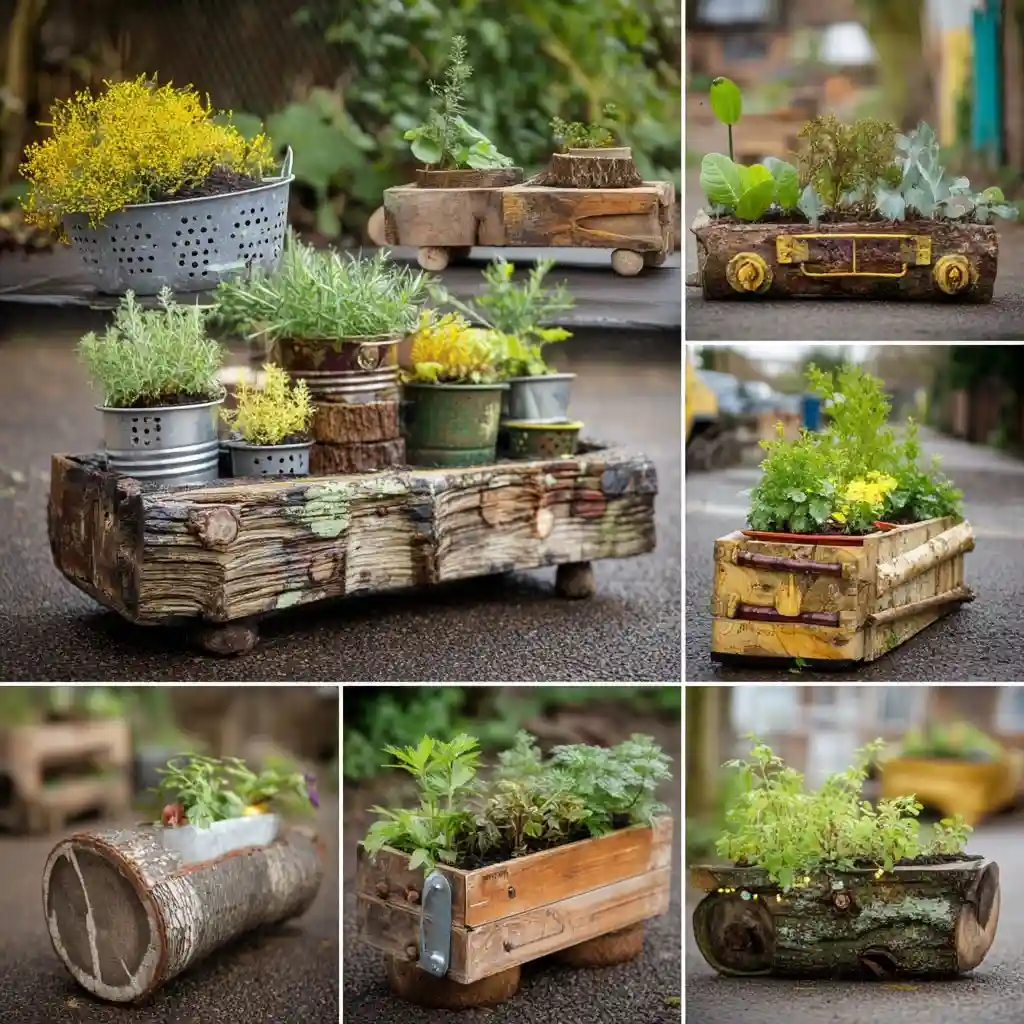
If you’re looking for planter ideas that are budget-friendly, eco-conscious, and full of personality, upcycled containers are the way to go. With a little imagination, almost anything can become a charming garden planter.
Old Crates and Boxes
Wooden crates are rustic and easy to work with. Stack them, hang them, or line them with landscape fabric before adding soil. They’re great for annuals, herbs, or a compact edible garden.
Colanders, Tins, and Kitchen Finds
Metal colanders are a favorite among DIY gardeners because they already have drainage holes. Teapots, mugs, and vintage bread boxes can also become quirky containers for succulents or small flowers.
Hollowed Logs and Tree Stumps
Turn fallen trees into natural planters by hollowing out logs or stumps. Fill them with soil and plant low-maintenance options like lavender, mosses, or creeping thyme for a woodsy look that blends beautifully into the landscape.
Breathe New Life into the Unexpected
Got an old wheelbarrow, filing cabinet, or pair of rubber boots? With a little creativity, these “junk” items can transform into standout centerpieces in your garden.
When you upcycle, your planter ideas become more than beautiful—they become sustainable statements of personal style.
Planter Ideas for Shade

Not every garden spot gets full sun, but that doesn’t mean your containers have to lack color or character. With the right plant selection, shady areas can be just as striking. These planter ideas for shade combine bold foliage and low-light blooms to make every corner shine.
Rex Begonias: Bold and Beautiful
Known for their dramatic leaves and intricate patterns, Rex begonias are perfect for shade containers. Their foliage comes in rich hues of silver, burgundy, and green—making them a standout on their own or paired with complementary plants.
Hostas Aren’t Just for the Ground
Miniature or compact hosta varieties do incredibly well in pots. Their broad leaves offer texture, and they pair beautifully with ferns, caladiums, or heucheras. Just be sure to keep the soil evenly moist and protect them from slugs.
Other Shade-Loving Favorites
- Heucheras (Coral Bells): Colorful foliage in purples, ambers, and greens.
- Fuchsias: Cascading flowers that love cool, shady spots.
- Impatiens: Reliable bloomers for deep shade.
- Lamium: A low-growing filler with variegated leaves.
Tips for Shady Container Success
- Use light-colored or reflective pots to brighten dim corners.
- Avoid overwatering—shade slows evaporation.
- Add a pop of color with decorative stones or mulch.
With a thoughtful mix of texture and tone, your planter ideas for shade will bring balance and beauty to the darker corners of your garden.
The Power of Potscaping
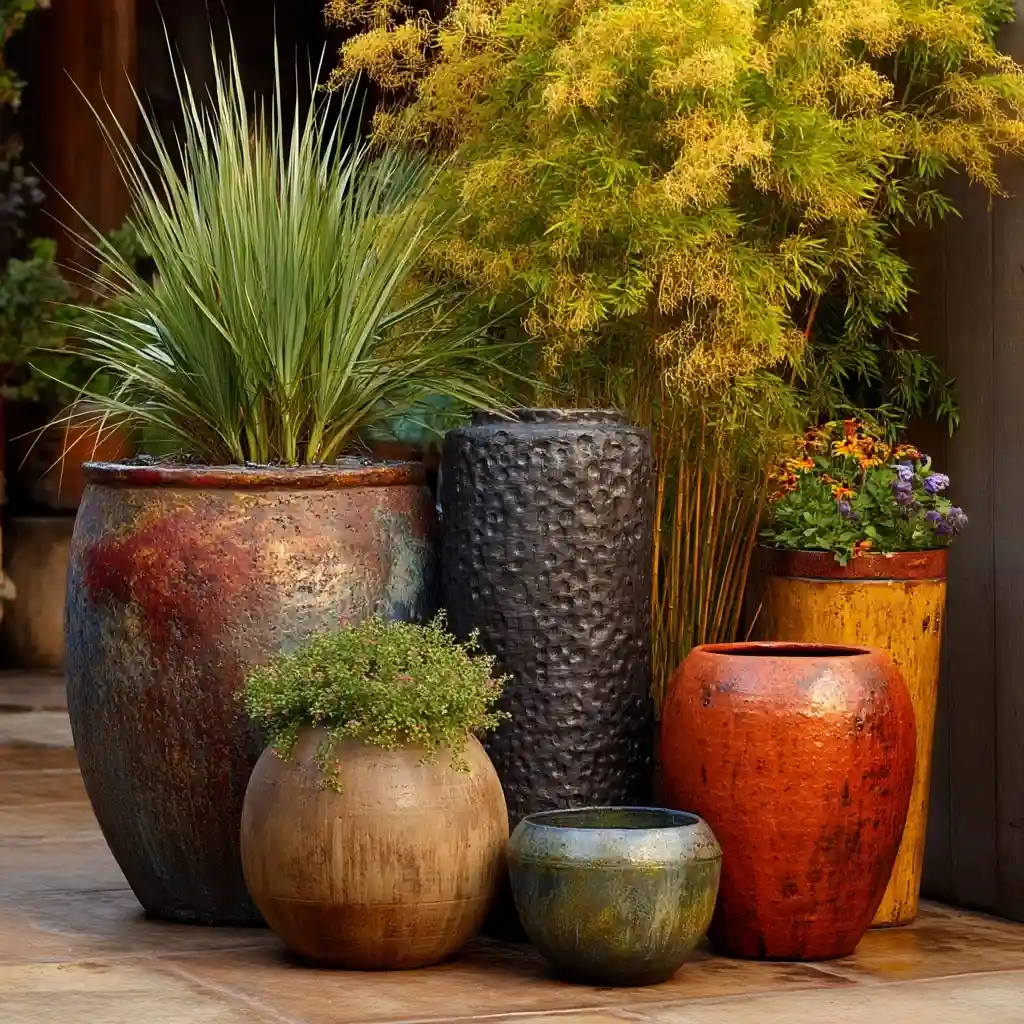
One of the most overlooked yet impactful planter ideas is “potscaping”—using groups of containers as a design element in your outdoor space. Instead of viewing pots as standalone features, think of them as part of a larger composition, like pieces in a garden mosaic.
What Is Potscaping?
Potscaping is the art of arranging multiple planters to create a cohesive visual effect. This could be a mix of different sizes, heights, and textures, grouped on a patio, stairway, or tucked into your landscape beds.
Group for Visual Weight
Groupings of three to five containers create more impact than a single pot. Try mixing heights with tall thrillers in one, cascading spillers in another, and a feature foliage plant in the third. Keep the color palette unified for harmony, or go bold with contrasting hues.
Use Containers as Landscape Elements
Large containers can act as focal points in the garden, much like shrubs or small trees. Use them to define a pathway, frame an entrance, or break up open space on a deck or balcony.
Potscaping Tips
- Vary pot sizes but keep the style or color consistent.
- Anchor groupings with a large feature plant, then build around it.
- Nestle pots among in-ground plantings for a natural look.
Potscaping elevates your planter ideas from individual accents to full-scale design statements that bring structure and artistry to your garden.
Sneak Edibles into Ornamental Containers
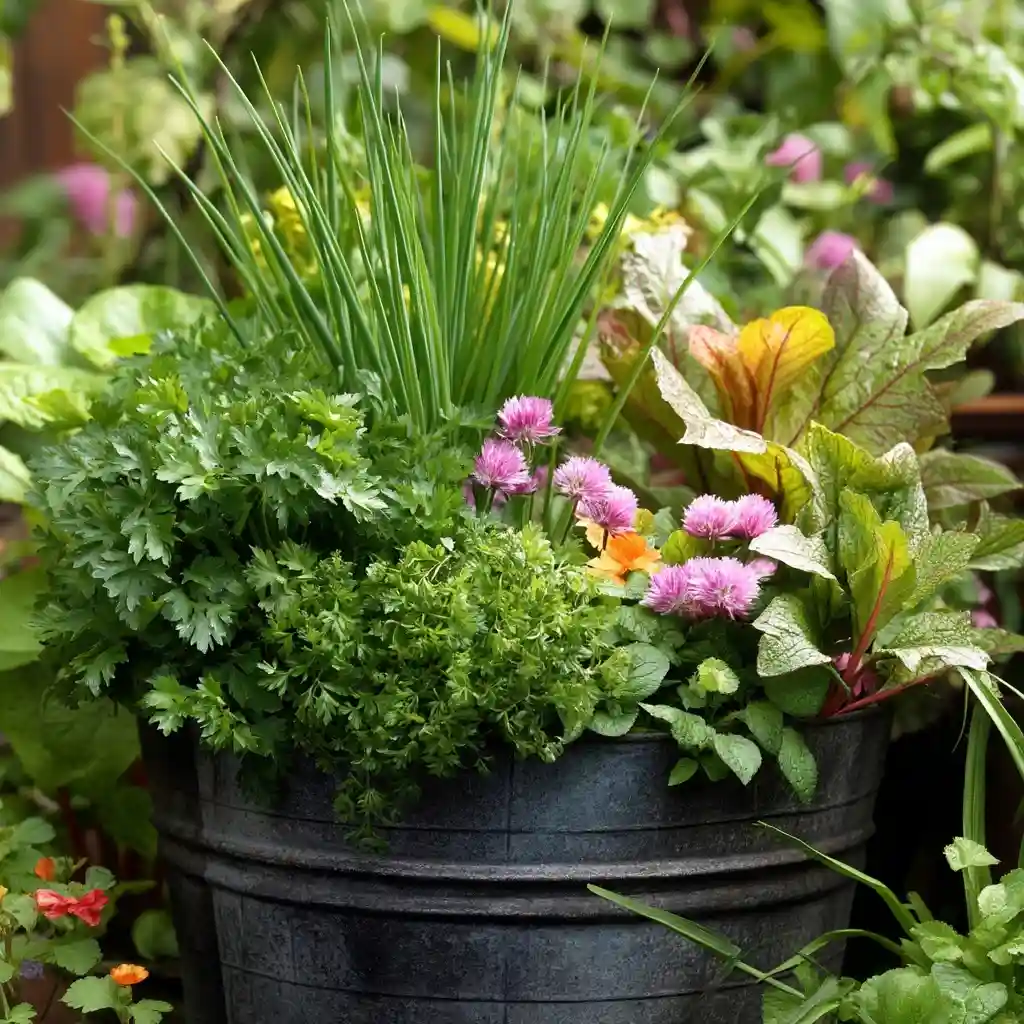
Combining beauty and utility is one of the smartest planter ideas you can adopt. By tucking herbs and veggies into your decorative containers, you create a garden that’s not only visually appealing but also deliciously functional.
Herbs That Pull Double Duty
Many herbs are as attractive as they are useful. Variegated basil, curly parsley, creeping rosemary, and lemon thyme all offer unique foliage textures—and they smell amazing. Use them as fillers or spillers in mixed containers, especially near your kitchen or outdoor dining area.
Edible Centerpieces
Consider using ornamental edibles as thrillers. Lemongrass adds vertical drama while repelling mosquitoes. Swiss chard ‘Bright Lights’ and ‘Rainbow’ bring bold pops of color and structure, making them both eye-catching and harvestable.
Best Pairings
- Rosemary + Petunias + Calibrachoa
- Chard + Coleus + Alyssum
- Basil + Zinnias + Sweet Potato Vine
Mixing edibles with ornamentals works best when the plants share similar sun and water needs. Stick to full-sun lovers or shade-tolerant combos to keep maintenance simple.
These multi-purpose planter ideas help you grow more in less space—without sacrificing beauty.
Choose Unique Foliage
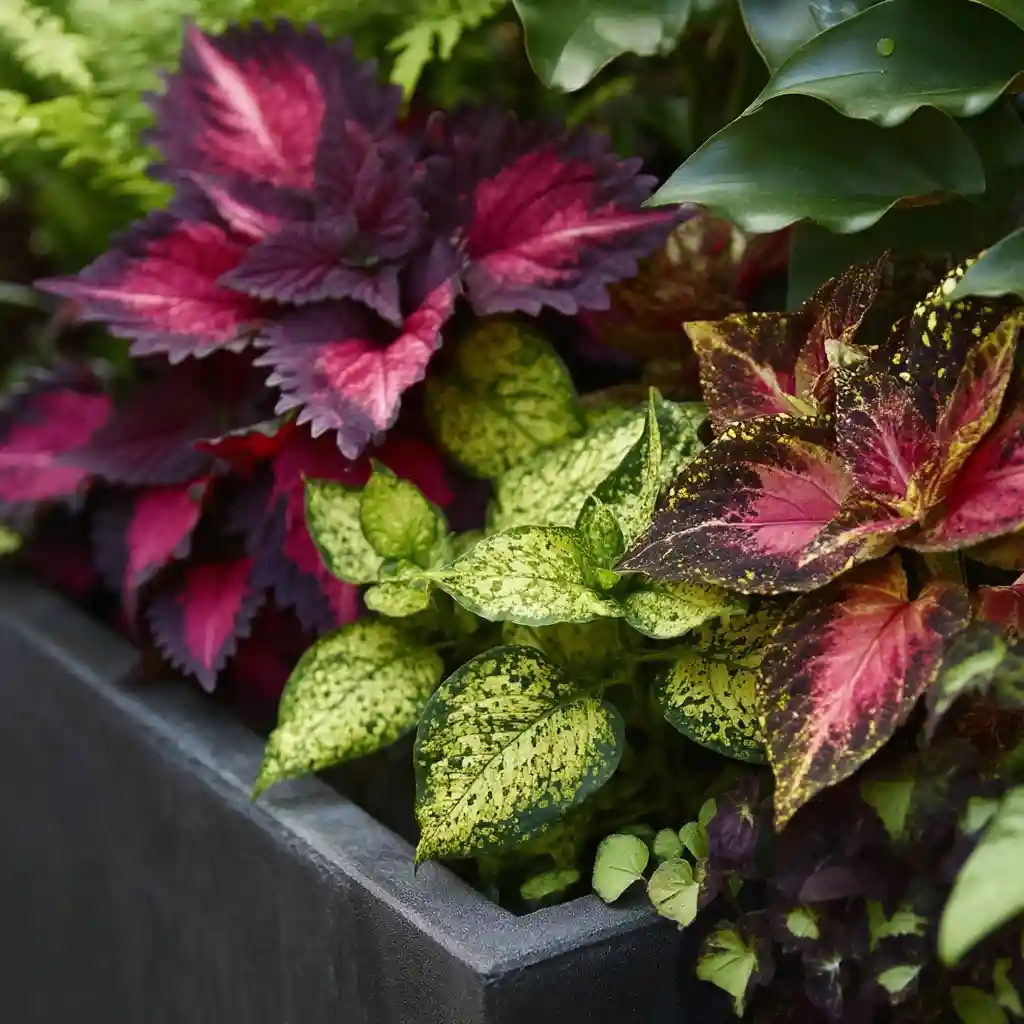
Flowers may get all the attention, but foliage is the unsung hero behind many standout planter ideas. Unique leaves can bring texture, contrast, and lasting color—even when blooms fade.
Coleus: A Color Chameleon
Coleus is a container garden favorite for good reason. Available in shades of burgundy, lime, coral, and nearly black, it offers a dazzling range of colors. Choose upright varieties for structure or trailing types to soften the edges of your pots.
Rex Begonias: Drama in Every Leaf
With their swirls, spirals, and silvery patterns, Rex begonias are practically living art. They thrive in partial to full shade and pair beautifully with ferns or hostas for a moody, textured look.
Polka Dot Plant: Playful Pops of Color
Polka dot plants (Hypoestes) add a splash of pink, white, or red speckles to containers. They’re great as fillers in mixed shade pots and add a playful element to any arrangement.
Foliage-First Tips
- Use bold foliage to fill visual gaps between flowering periods.
- Combine matte and glossy leaves for contrast.
- Pair variegated plants with solid tones to avoid visual clutter.
Incorporating statement foliage gives your planter ideas staying power through the whole season—and sometimes even beyond it.
Add Perennials to Containers
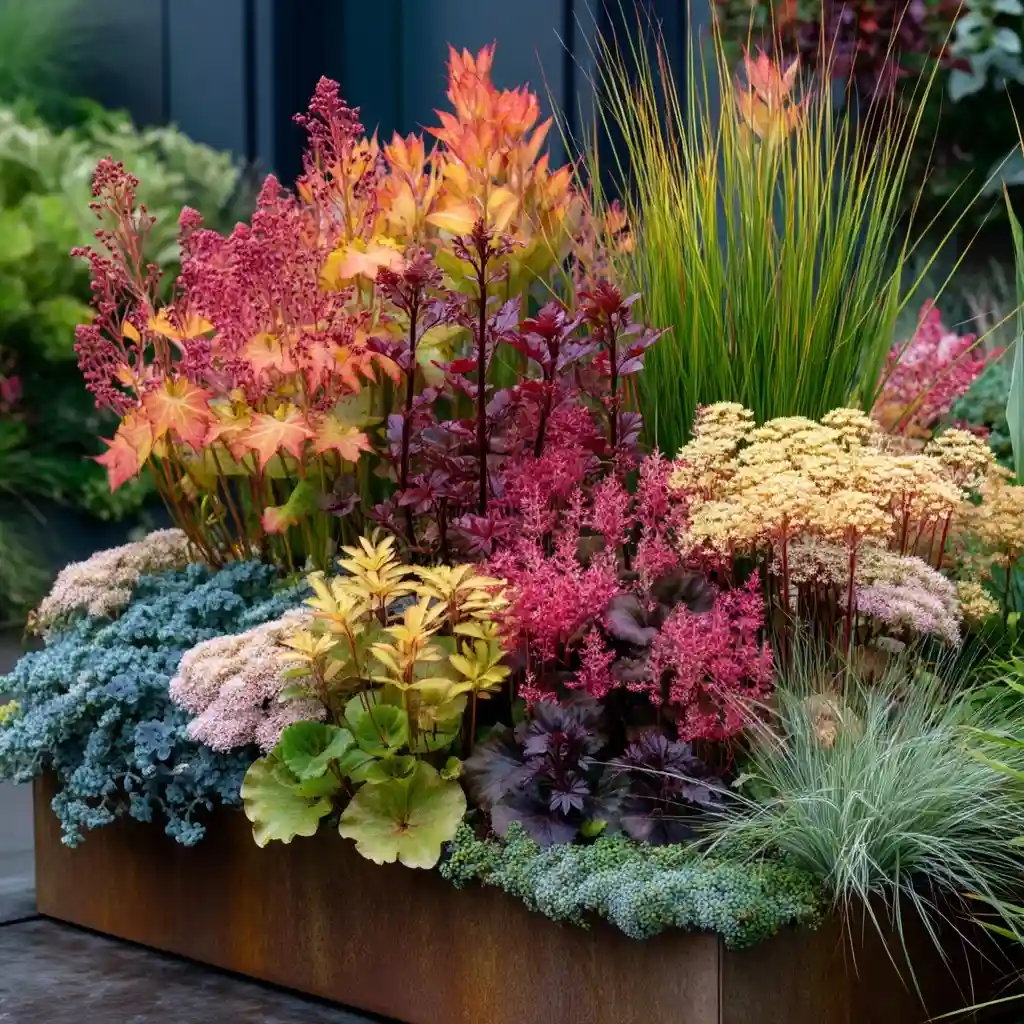
If you’re only using annuals, you’re missing out on some of the most resilient and long-lasting planter ideas. Adding perennials to your containers brings season-spanning beauty, rich textures, and a sustainable twist to your garden design.
Why Use Perennials in Pots?
Perennials like heucheras, miniature hostas, and ornamental grasses offer more than just good looks—they return year after year if overwintered properly. Plus, their unique foliage can complement seasonal blooms and extend the life of your arrangements into fall and beyond.
Top Perennials for Containers
- Heucheras (Coral Bells): Known for their bold foliage in shades like caramel, deep purple, and chartreuse. Perfect for shade or partial sun.
- Mini Hostas: Ideal for small containers in shady areas.
- Sedum and Sempervivum (Hens and Chicks): Great for full-sun, drought-tolerant designs.
- Lavender: Adds scent, texture, and soft purple blooms to sunny containers.
Seasonal Strategy
Start your container with perennials as the anchor, then rotate annuals around them as the seasons change. When the season ends, transplant hardy varieties into garden beds or overwinter them in protected spots.
Including perennials in your planter ideas reduces waste, saves money, and adds dependable structure to your garden designs year after year.
Make a Big Impact with Singles or Doubles
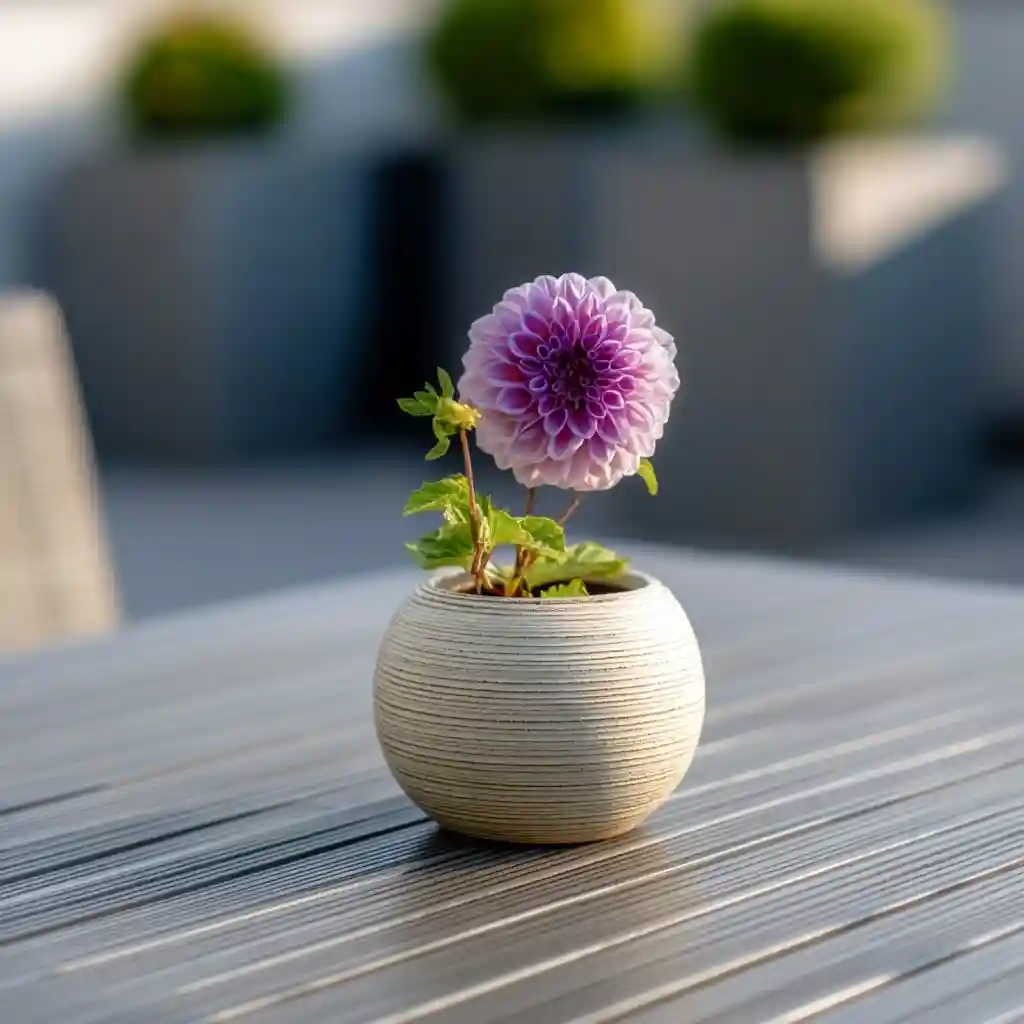
Not all planter ideas need to be complex. In fact, sometimes the most striking containers are the simplest—featuring just one or two standout plants. This minimalist approach lets bold plants shine without competition.
The Power of One
A single dramatic plant in a well-chosen pot can create a sculptural focal point. Think large hostas, blooming dahlias, or dwarf trees like Japanese maples in a statement planter. Let the plant’s shape and color carry the arrangement.
Dynamic Duos
Pair two plants that complement each other in form or contrast. Try a tall grass with a cascading spiller, or a richly colored coleus with a neutral-toned ornamental grass. These duos work especially well in modern or tight spaces where clutter can be overwhelming.
Best Feature Plant Options
- Dahlias: For color and bloom power.
- Hostas: For dramatic foliage in the shade.
- Lavender: For scent and simplicity in full sun.
- Agave or succulents: For drought-tolerant style with structure.
Less is more—especially when space is limited or you’re aiming for a modern aesthetic. These minimal planter ideas are easy to maintain and visually impactful.
Conclusion
Whether you’re a seasoned gardener or just starting out, great planter ideas can completely transform your outdoor space. From bold thrillers to clever upcycled containers, there’s no shortage of creative ways to make your garden containers shine. By mixing color, texture, edibles, and perennials—while keeping your plants happy with the right soil and care—you can build stunning displays that last all season and beyond.
Let your containers reflect your personality, experiment with new combinations, and don’t be afraid to keep it simple. Sometimes, one beautiful plant in a great pot says everything.
Happy planting!
🌿 Love gardening inspiration? Follow me on Pinterest for bold plant ideas, tips, and seasonal color!
More Posts
